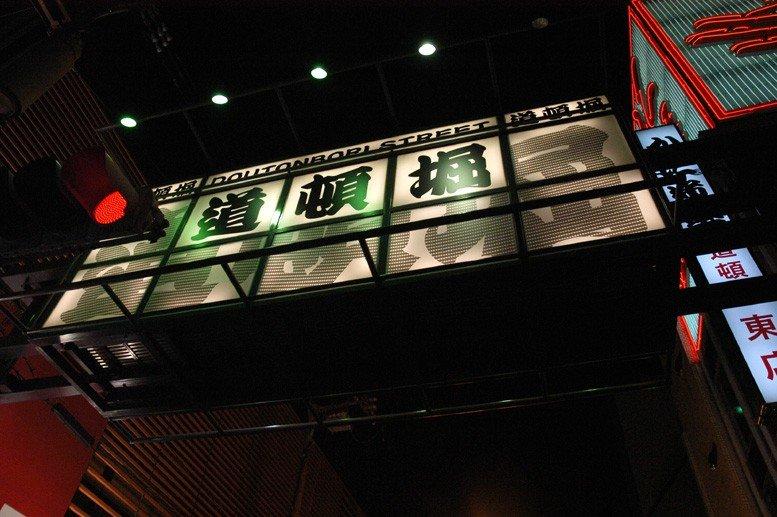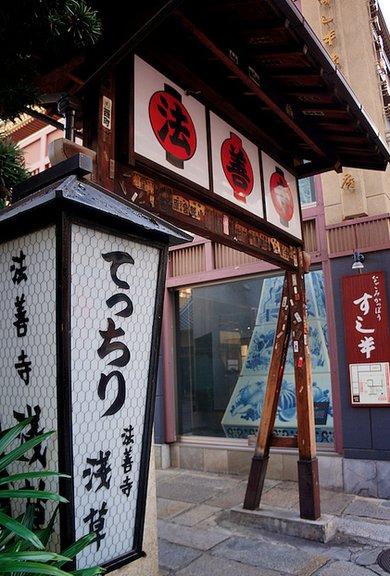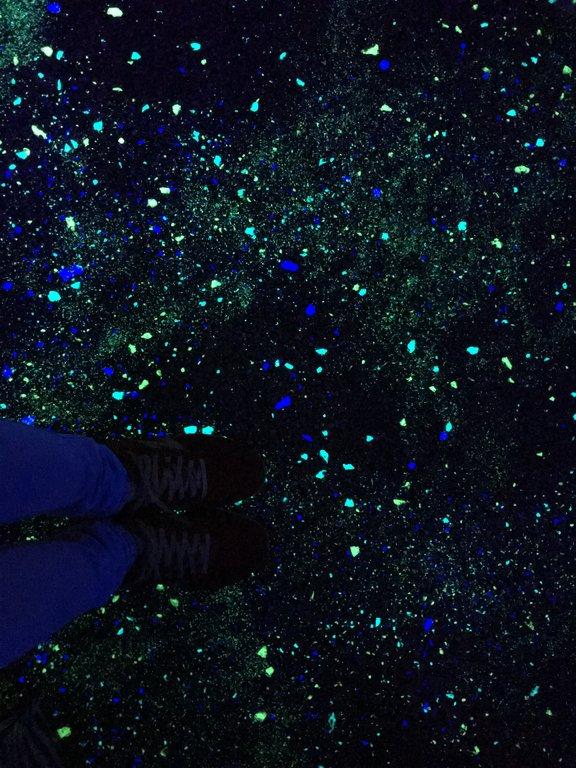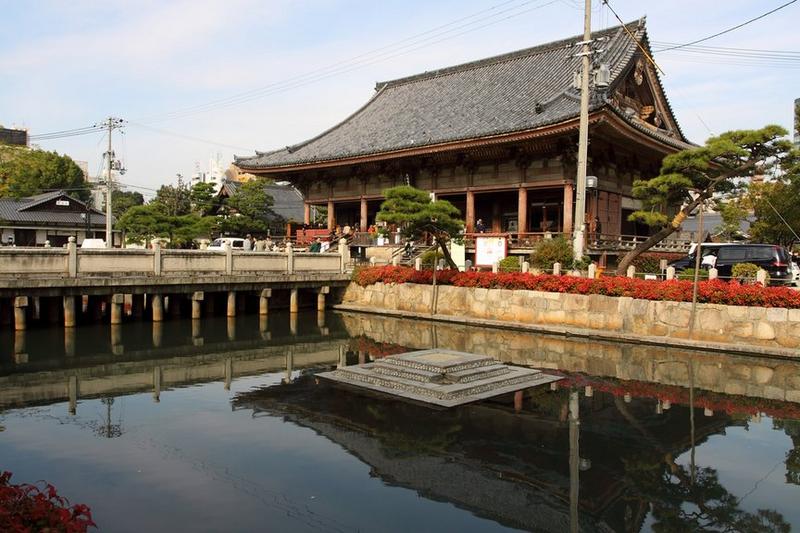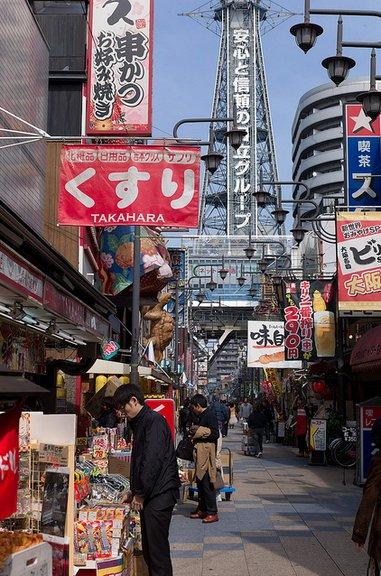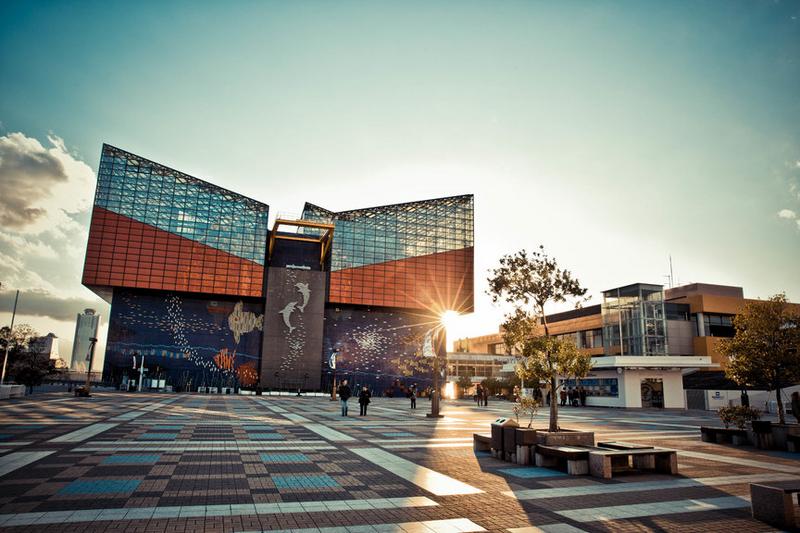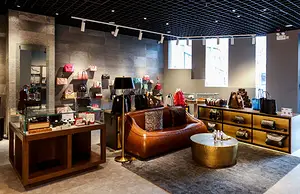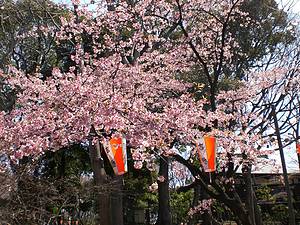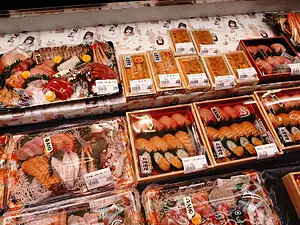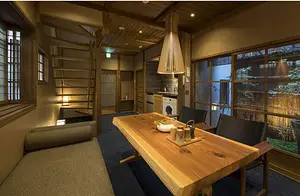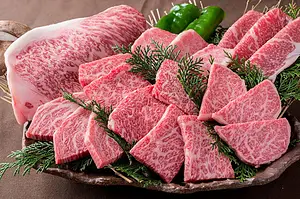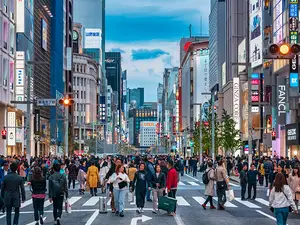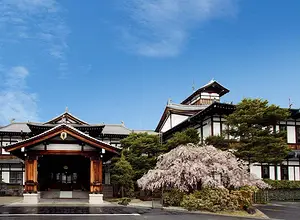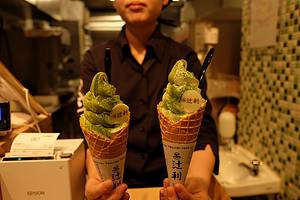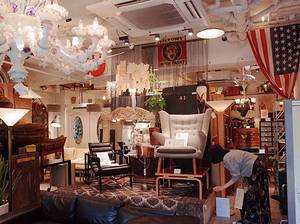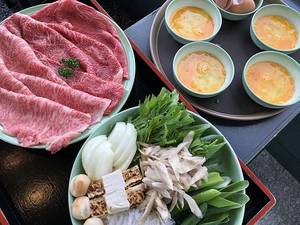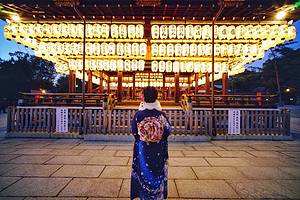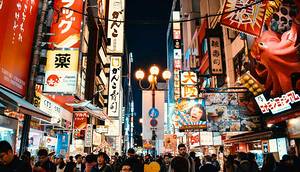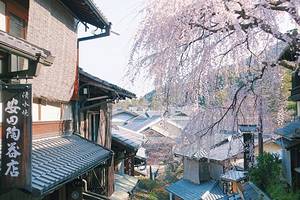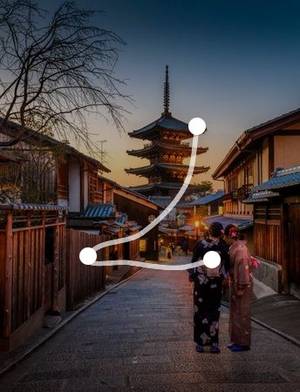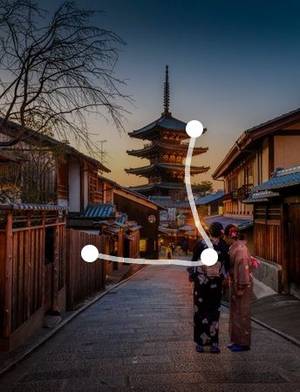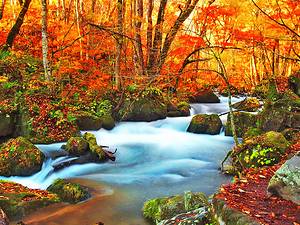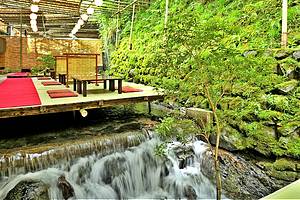Must-visit itinerary for the first-time visitors in Osaka
1 cities |
10 attraction(s) |
total distance 25
km
 TIPS
TIPS
Day1
Day2
Day3
Day1: Osaka
4 attraction(s) ·
14 km
1
Osaka Castle Park Center
Osaka Castle Park is a vast park. From late January to early March, the plum blossoms in the park's plum grove bloom, attracting numerous visitors. From late March to early April, over 4,000 cherry blossom trees bloom, making it a popular cherry blossom viewing spot in Osaka.
Osaka Castle, known as one of Japan's three famous castles, was built by Toyotomi Hideyoshi with the goal of unifying the country, taking three years to complete. Although it was burned down multiple times during wars, it was rebuilt in 1931 with the efforts of the people of Osaka and has stood ever since. It is one of Osaka's most iconic buildings. The grand Osaka Castle Keep has a five-story exterior and an eight-story interior. Its dazzling gold-plated reliefs earned it the nicknames "Golden Castle" or "Castle of Brocade." When taking photos of the castle keep, don't miss the golden carp on the top. The lower seven floors of the keep are used for exhibiting historical artifacts, and the eighth floor observation deck offers a panoramic view of Osaka's cityscape. As a representative historical building in Osaka, Osaka Castle has appeared in numerous movies, TV shows, anime, and games, making it a must-visit location for travelers in Osaka.
There are two shops near the castle keep that serve delicious takoyaki (octopus balls) at affordable prices. It is recommended to try them. The Osaka Museum of History, Osaka City Museum, Osaka Prefectural Police Headquarters, Osaka Castle Hall, and Osaka NHK Hall, located near the park, are also worth visiting or photographing from the outside.
5
km
2
Dotonbori is the most bustling area in Osaka, a landmark food destination and the birthplace of Osaka's culinary culture. It is a top choice for travelers visiting Osaka, offering a wide range of specialty foods such as takoyaki, teppanyaki, yakitori, conveyor belt sushi, fugu cuisine, and various delightful desserts. Even inconspicuous small shops can satisfy your taste buds. This reflects the food culture that the people of Osaka aspire to, where it's not uncommon to eat until bankruptcy.
If I have to make a special recommendation, you can try the always crowded "Kinryu Ramen" right at the entrance, the original teppanyaki restaurant "Boteyu," and the famous takoyaki shop "Konamon Museum" where you can also experience making takoyaki. There's also the flagship stores of "Osaka Ohsho" and "Kani Doraku." When you come to Osaka, how can you miss the opportunity to taste the most authentic flavors from these two nationally renowned establishments? In addition to savoring delicious food, you can visit the Hōzen-ji Temple to pay respects to the deity Fudō Myō-ō, watch Kabuki performances at the Shochikuza theater, and take a stroll along the Dotonbori River at night, enjoying the vibrant neon lights on both sides and experiencing the unique ambiance of the Edo period in the Hōzen-ji Yokocho alley.
1
km
3
Hozenji Temple is located in the shopping street of Namba, Osaka. It is also known as Sen Nichi Temple because people used to chant Buddhist scriptures continuously for a thousand days there. The name "Sen Nichi" is derived from this practice. The main purpose of Hozenji Temple is to pray for successful relationships and prosperous business. Situated in the lively and bustling Dotonbori area, it is not only popular among locals but also attracts many foreign travelers. The most famous feature of Hozenji Temple is the Mizukake Fudo, or the "Unmoving Water Hanging Statue." This Buddha statue is made from natural tree materials and is covered in leaves and moss. Visitors who come to worship first pour water over the statue, which makes it unique. During the air raids in Osaka, the entire temple was burned down, but miraculously, the Unmoving Water Hanging Statue survived. Combined with the temple's reputation for granting prayers, it continues to attract a steady stream of visitors every day.
9
km
Day2: Osaka
5 attraction(s) ·
11 km
1
The temple, known as Shitenno-ji, was built by Prince Shotoku, the founder of Japanese Buddhism, to promote Buddhism. It is the oldest official temple in Osaka and is famous for its annual events. The stone torii gate, Rokujido hall, and Daishi hall in the temple are important cultural properties of Japan. The stone stage in the turtle pond is also known as one of Japan's three major stages along with the stone stage in Sumiyoshi Shrine and the flat stage in Itsukushima Shrine.
Prince Shotoku, who ascended to the throne at the age of 16, made contributions to the spread of Buddhism. At that time, Buddhism had already spread from India to China and was rapidly developing. The Soga faction, represented by Prince Shotoku, sought to introduce this emerging religion to Japan. However, the powerful Mononobe faction, who revered ancient Japanese religion, strongly opposed the introduction of Buddhism. The Soga and Mononobe factions even waged war over this issue. It is said that the prince achieved victory by praying to the Four Heavenly Kings, the celestial soldiers of Buddha. Therefore, to commemorate the victory in 593 AD, he ordered the construction of Shitenno-ji Temple.
The temple was built not far from Osaka Bay, which plays an important role in trade and transportation. This strategically significant geographical location allows Japan to showcase its strength and prosperity to the world. Although the temple has undergone several reconstructions, its architectural style and layout have not changed much from its original form.
2
km
2
The Tsutenkaku Tower is a high-rise building that leads to the sky, modeled after Paris' Arc de Triomphe and Eiffel Tower. It was once the tallest in Japan and is a symbol of Osaka like Osaka Castle. Travelers can take an elevator to the top observation deck and enjoy the beautiful scenery around Osaka. On the 5th floor, there is the lucky god Biliken, who is said to bring luck when touched on the soles of his feet. The neon light at the top is used to predict the weather. White for sunny, orange for cloudy, blue for rainy, and pink for snowy, which is quite interesting.
The nearby Shinsekai is a paradise of local cuisine, featuring various Osaka specialty foods such as takoyaki, kushikatsu, and the slightly more expensive fugu cuisine, all of which are must-try delicacies.
1
km
3
New World was built in 1912, with its southern part imitating New York and the northern part imitating Paris. Moon God Park opened in 1912 and closed in 1923. New World has a rich and unique history and personality. There are many inexpensive restaurants, cheap clothing stores, cinemas, Japanese chess and mahjong clubs, and pinball clubs around New World. The iconic Tsutenkaku Tower is located here.
With the development of tourism driven by Tsutenkaku, the food industry here has become increasingly popular. One of the most representative features is kushikatsu (deep-fried skewers). There are specialized kushikatsu shops all over New World, such as Daifukujin Billiken statue at the entrance, "Kushikatsu Yokozuna" known as the number one kushikatsu in Japan, "Kushikatsu Jyanjyan" with over a hundred varieties of kushikatsu, the original kushikatsu "Shodai Ebisu" where you can enjoy both kushikatsu and teppanyaki, and "Ichiban," a kushikatsu specialty shop where the totote (tode) stew is also delicious. In addition, the oversized takoyaki from the famous shop "Tako Tenkaku," which has been visited by many celebrities, and the fugu (blowfish) cuisine from "Tsukabara-ya" with a large pufferfish lantern hanging at the entrance, are highly recommended.
9
km
4
Kaiyukan in Tempozan, Osaka, is a large aquarium and one of the most popular attractions among foreign travelers in recent years. It showcases the natural environments of the Pacific Ring of Fire and the Pacific Ring of Life through 14 large water tanks with nearly 620 species of over 30,000 marine creatures. Visitors first take an elevator to the highest 8th floor and then descend through a ramp to explore 10 different areas featuring a variety of marine life, which is very impressive. The most popular attraction is the whale shark, and there is also a life-size model for visitors to take photos with. If you obtain a re-entry ticket, you can visit multiple times on the same day. Since the admission fee for Kaiyukan is a bit expensive, it is recommended to purchase a combination ticket with a ride on the Santa Maria ship.
1
km
5
The Tempozan Ferris Wheel is located on Mount Tempozan, known as the lowest mountain in Japan. It takes approximately 15 minutes to complete one rotation and is a large observation wheel. From the Ferris wheel, you can overlook the nearby Kaiyukan aquarium and the surrounding seascape, as well as enjoy panoramic views of the distant Rokko Mountains, Kansai International Airport, Akashi Kaikyo Bridge, and Mount Rokko in Kobe. Before boarding, passengers can choose between a regular cabin with large Disney plush toys or a special cabin with fewer seats but transparent walls for better viewing. However, the waiting time for the transparent cabins is usually longer. It is recommended to purchase a combination ticket with the Santa Maria cruise for admission.
Day3: Osaka
1 attraction(s) ·
0 km
1
Universal Studios Japan, also known as USJ, is a highly popular theme park in Japan, similar to Tokyo Disneyland. It is a must-visit attraction for both Japanese citizens and foreign travelers when visiting the Kansai region. After enjoying the beautiful scenery of Osaka, you can experience a different kind of excitement and joy at Universal Studios, where various entertaining facilities with Hollywood movie themes await you.
Here, you can watch Spider-Man swinging through the city, dodge encounters with sharks at sea, marvel at the roaming dinosaurs in Jurassic Park, and feel the danger of being chased by zombies in the world of Resident Evil. The water world show, which only performs once a day, offers an immersive experience filled with excitement and spectacle. Don't miss out on the thrilling experience of riding a roller coaster backward, personally tested by members of the popular Japanese idol group SMAP. The park also features various interesting themed restaurants and dazzling parade performances at night. The wonders and delights of Universal Studios don't need much introduction – come and experience it firsthand, as it will definitely be worth your visit.
Since its grand opening in July 2014, the highly popular Harry Potter-themed area faithfully recreates the scenes from the original work and offers a wide range of exquisite merchandise for sale.
Due to its convenient transportation and proximity to Osaka Station, as well as shorter queue times for attractions compared to Disneyland, visiting Universal Studios is a relatively relaxed experience in terms of time management. Additionally, the park's opening and closing times vary, so travelers who want to see the nighttime parade should remember to check the official website in advance for the schedule.
Useful tip: UnionPay cards starting with "62" are accepted within the park. More than half of the local ATMs also allow cash withdrawals using UnionPay cards, and most ATMs have user-friendly interfaces in Chinese.

